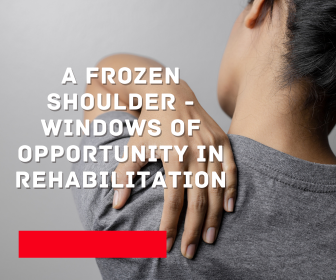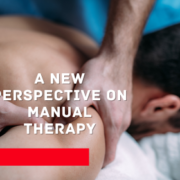A frozen shoulder – Windows of opportunity in rehabilitation
A “window of opportunity” (WOO) refers to a timeframe during which pain relief and/or increased confidence facilitate engaging in normal activities and therapeutic exercises. This concept is widely recognized in physical therapy and rehabilitation.
To illustrate this principle, consider the example of frozen shoulder — although it applies broadly to various conditions. The WOO can be particularly crucial in frozen shoulder rehab, especially when neurological inhibition impairs movement.
The Benefits of a WOO
⇒Promoting Activity and Exercise
While pain relief is inherently valuable, there’s an additional significant advantage: it helps you get moving again.
Understanding the importance of a WOO requires recognizing that exercise isn’t just beneficial—it’s exceptionally effective medicine. Its benefits are more substantial, easier to achieve, and longer-lasting than many realize. Anything that facilitates movement and exercise, even briefly, holds immense value.
⇒Addressing Difficult Conditions
Conditions like frozen shoulder can be extremely challenging to treat effectively; there’s no definitive cure for the most severe cases. This difficulty extends to numerous other common musculoskeletal issues — so much so that the market is flooded with solutions aimed at desperate patients. Often mitigation and coping strategies are all one can hope for; this becomes crucial in conditions such as frozen shoulder where maintaining any possible range of motion is vital to minimizing inevitable losses.
A WOO stands out by making it easier for individuals to move despite these challenges—a key factor in managing persistent musculoskeletal conditions successfully.
The Concept of WOO in Pain Relief
Mostly, a fine WOO is derived from anything that provides a somewhat reliable and robust pain-relief or “reassuring” effect — more substantial than just a placebo. Although placebos can also generate some level of WOO, we seek something with greater substance. For example, applying a topical analgesic to an ankle sprain can relieve more pain than a placebo (which is how we know it works by definition). While its effect may not be overwhelmingly potent, it’s still significantly stronger than mere optimism — allowing for better opportunities to mobilize the ankle gently at first and engage in systematic joint mobility drills later on.
The goal isn’t to create an opportunity for over-exertion — that’s another type of WOO sought by some athletes. Instead, the intention is simply to facilitate normal rehabilitation processes.
A particularly intriguing form of WOO involves vibration’s odd impact on stretching – an unusual body hack. Many people find they can suddenly stretch further – achieving significantly increased range of motion – right after their muscles are shaken (not stirred). This enhanced flexibility endures! Increasing flexibility largely depends on building neurological tolerance for stretching; thus experiencing considerable extension without injury helps teach the nervous system: “Oh, I’ve learned I can stretch this far without tearing anything.” Consequently: “Righto then! I’ll keep going that far!” This exotic phenomenon isn’t widely known or needed since flexibility tends to be overrated.
In essence : A meaningful improvement generates not only effective treatment but almost any approach making patients feel better overall sounds great except there exists dark side as well shockingly few chronic painful condition treatments prove effective back most notorious untreatable cases medicine means finding good WOOs back patients quite challenging task yet lasting benefits aren’t always necessary quality transient nature defining window opportunity rather hangar-bay-door explains both use-overuse justification massage chiropractic adjustments notoriously ephemeral results many cases









